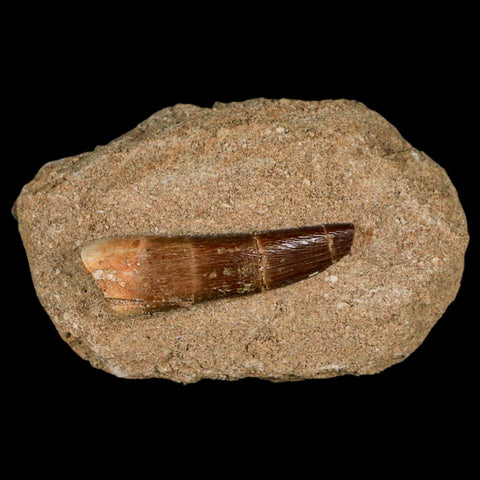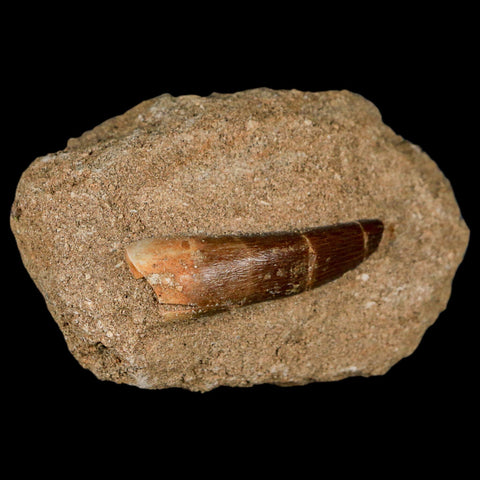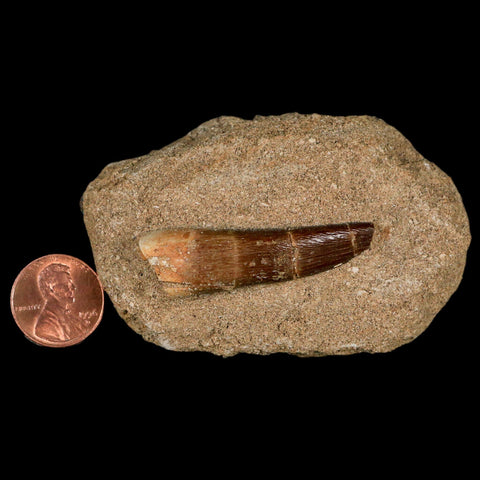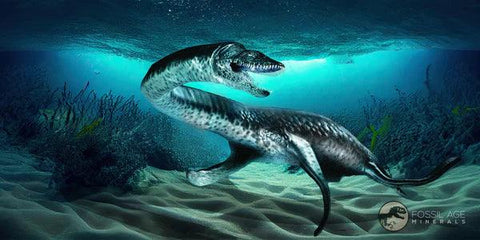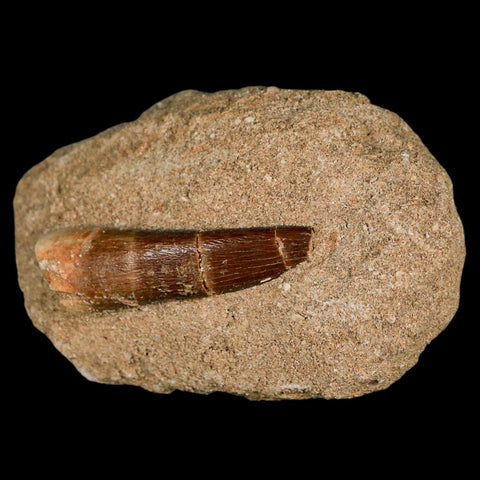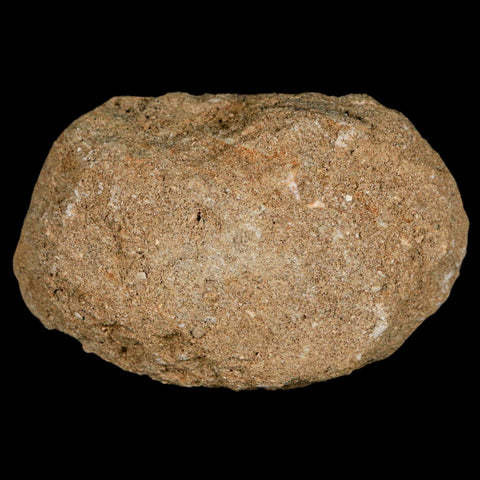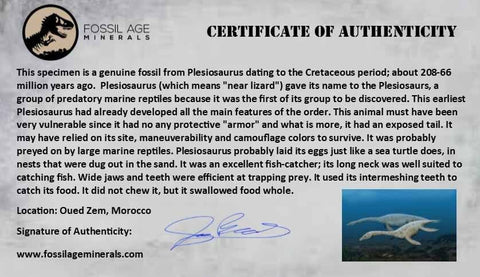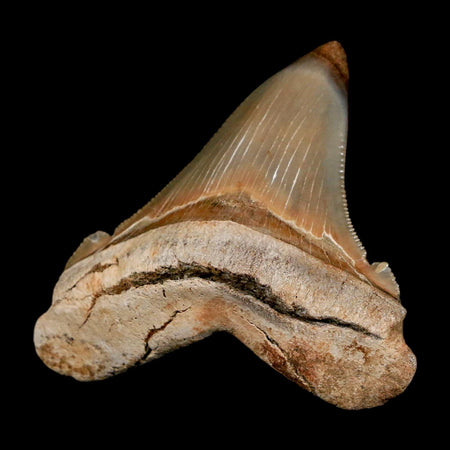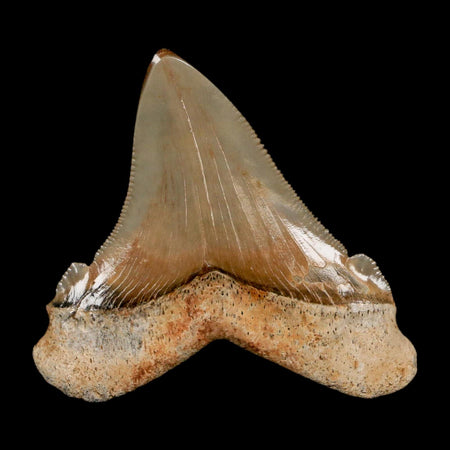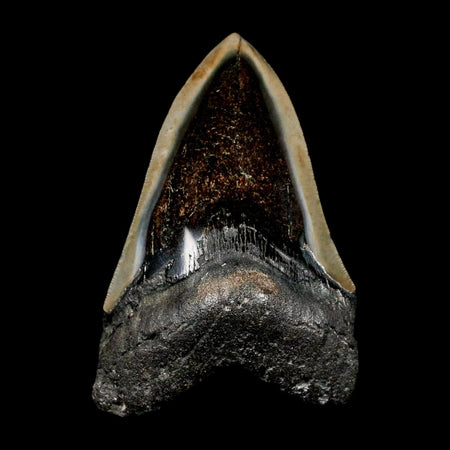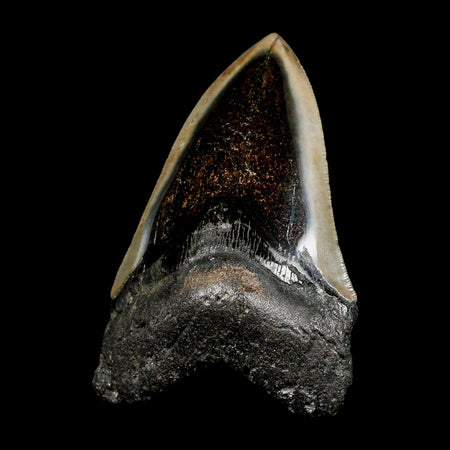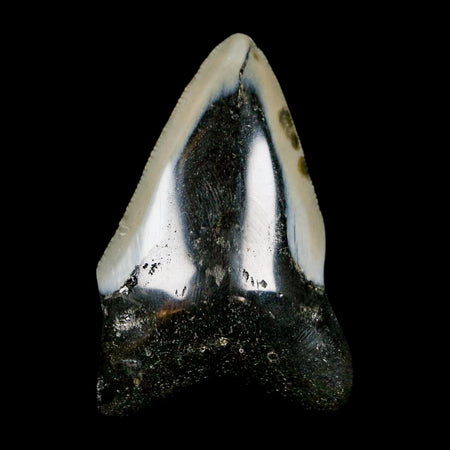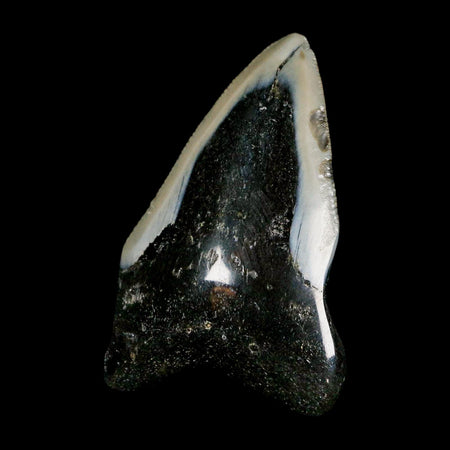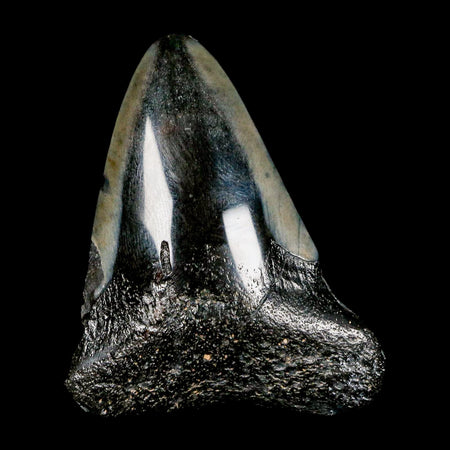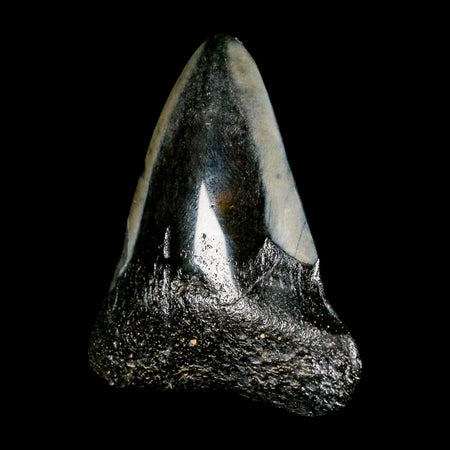1.8" Plesiosaur Zarafasaura Tooth Fossil In Matrix Cretaceous Dinosaur Era COA
Location: Khouribga, Morocco
Weight: 4.7 Ounces
Dimensions: 3 Inches Long, 1.9 Inches Wide, 1.5 Inches Thick (Matrix)
Tooth Dimensions: 1.8 Inches Long, 0.5 Inches Wide
Comes with a Certificate of Authenticity.
The item pictured is the one you will receive.
This is a genuine Tooth fossil.
Plesiosaur Zarafasaura
Zarafasaura Oceanis belongs to the family Elasmosauridae. The generic name Zarafasaura derives from Zarafa, an Arabic word for ‘giraffe,’ and Saurus, Greek for ‘lizard.’ The specific name means ‘daughter of the sea’ in Latin.
Paleontologist Dr. Peggy Vincent from the National Museum of Natural History in Paris, France, and her colleagues first described the species in 2011 from incomplete skull remains found in Morocco.
Zarafasaura Oceanis, measuring around 23 feet (7 meters) long, lived between 72 and 66 million years ago. As one genus among many in the Plesiosauriae family, Plesiosaurus represents a fascinating chapter of prehistoric life. Artistic portrayals often blend different Plesiosaur species, influenced heavily by captivating cryptozoological myths like those of the Loch Ness Monster. Owning a fossil from this extraordinary era connects you directly to these ancient wonders and their enduring mysteries.
Existed from 228 million years ago to 61.6 million years ago
Lived in a marine environment
Was a carnivore
938 different specimens have been found by paleontologists.
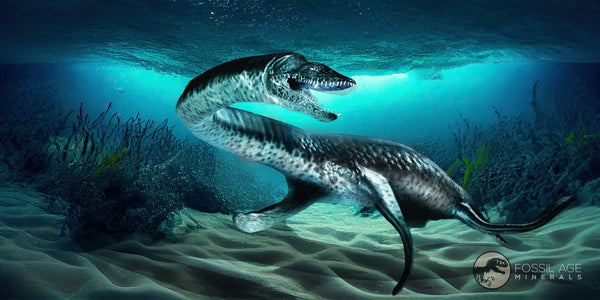
Please be aware of the nature of fossils:
Being buried under the ground for millions of years under tons of pressure tends to be rough. No fossil comes out of the ground whole and perfect. Most fossils have undergone some restoration, while others are altered by man simply to enhance their presentation in different ways. The workers in Morocco do a very professional job of unearthing and preserving these natural treasures; however, commonly, natural cracks are visible on the surface. These are part of the natural beauty of the fossil and are not considered defects.


